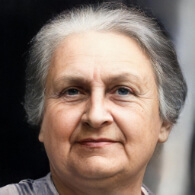False Fatigue (Montessori)
In Montessori education, False Fatigue is a phenomenon typically observed in Children's Houses worldwide, often around 10 a.m. At this time, children may seem to lose interest in work, their behaviour might become disorderly, and the noise level can rise.[1] It may appear as if the children are tired, but if the Montessori educator recognizes this as simply false fatigue, they will let the children be, who will subsequently return to their work on their own, often at an even higher level of engagement than before.
Montessori Quotes
- "Let us leave the life free to develop within the limits of the good, and let us observe this inner life developing. This is the whole of our mission."[2]
- "The first duty of an educator, whether he is involved with the newborn infant or an older child, is to recognize the human personality of the young being and respect it."[3]
Research and Critiques
- Pros: The understanding of false fatigue allows educators to recognize the ebb and flow of children's concentration and energy levels, fostering a learning environment that is attuned to the child's natural rhythms.[4]
- Cons: Critics argue that the concept of false fatigue may be used to dismiss signs of genuine tiredness or overload in children. It may also undermine the importance of regular breaks or changes in activity.[5]
Comparisons to Other Methods
In contrast to traditional teaching methods that adhere strictly to a scheduled routine, Montessori education promotes flexibility in response to observed patterns like false fatigue, thus adapting the learning environment to the natural rhythms of the child.[6]
See Also
Glossary of Montessori Terms
The Glossary of Montessori Terms is a collection of specific terms and vocabulary that are related to the Montessori method of education, primarily focusing on the theory and practice for children aged 3 to 6. The jargon used by Montessori educators offers a unique insight into child development as discussed by Maria Montessori. The 'Montepedia Glossary of Montessori Terms' originated from a glossary that was compiled by the late Annette Haines from the Montessori Training Centre of St. Louis, at the request of Molly O'Shaughnessy from the Montessori Centre of Minnesota. The reason behind the creation of this glossary was to supplement O'Shaughnessy's lecture at the Joint Annual Refresher Course that took place in Tampa, Florida, in February 2001.[7] The glossary has since been expanded and updated with additional 'Montessori Terms'.
- 3-Hour Work Cycle
- Absorbent Mind
- Adaptation
- Adolescence
- Albums
- Advisor
- Analysis of Movement
- Casa dei Bambini
- Children of the Earth
- Children's House
- Choice
- Classification
- Concentration
- Concrete to Abstract
- Control of Error
- Coordination of Movement
- Cosmic Education
- Creativity/Imagination
- Cycle of Activity
- Development of the Will
- Deviations
- Didactic Materials
- Director
- Discipline from Within
- Earth Child
- Elementary Classroom
- Erdkinder
- Exercises of Practical Life
- False Fatigue
- Freedom of Choice
- Freedom within Limits
- Grace and Courtesy
- Great Stories
- Ground Rules
- Guide
- Help from Periphery
- Human Tendencies
- Imagination
- Independence
- Indirect Preparation
- Indirect Presentation
- Isolation of a Difficulty
- Intrinsic Motivation
- Job
- Kinderhaus
- Language Appreciation
- Language Acquisition
- Learning Explosions
- Materials
- Materialised Abstractions
- Mathematical Mind
- Maximum Effort
- Mixed Ages
- Montessori Materials
- Nido
- Montessori Materials
- Normalization
- Obedience
- Peace
- Personality
- Planes of Development
- Points of Interest
- Practical Life
- Phonemic Awareness
- Phonics Instruction
- Phonological Awareness
- Prepared Environment
- Presentation
- Primary Classroom
- Psychic Embryo
- Reading Comprehension
- Repetition
- Respect
- Self-Discipline
- Self-Regulation
- Sensitive Periods
- Sensorial Materials
- Simple to Complex
- Socialization
- Society by Cohesion
- Sound Games
- Three-Hour Work Cycle
- Valorisation
- Vocabulary Enrichment
- Work
Please help to translate this page into your local language
References
- ↑ Lillard, P.P. (1972). Montessori: A Modern Approach. Schocken Books.
- ↑ Montessori, M. (1936). The Secret of Childhood. Longmans, Green and Co.
- ↑ Montessori, M. (1936). The Secret of Childhood. Longmans, Green and Co.
- ↑ Lillard, A. (2017). Montessori: The Science Behind the Genius. Oxford University Press.
- ↑ Mooney, C. G. (2000). Theories of Childhood: An Introduction to Dewey, Montessori, Erikson, Piaget, and Vygotsky. Redleaf Press.
- ↑ Thayer-Bacon, B. J. (2017). Maria Montessori, John Dewey, and William H. Kilpatrick. Education and Culture, 33(2), 31-57.
- ↑ Haines, A. (2001). Glossary of Montessori Terms. Montessori Training Centre of St. Louis.
